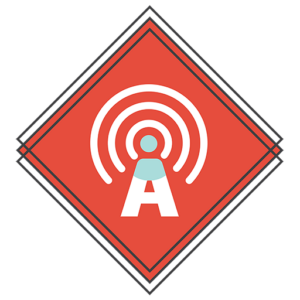
Updated: 27 September, 2025
For a teacher, few experiences are as rewarding as having a class of excited, engaged students who actively participate. In contrast, facing a bored or disengaged class can be deeply discouraging. That’s why it’s essential to know some effective student engagement strategies to make teaching more enjoyable. In this post, we’ll cover strategies developed with insights from Professor Dag Flachet and myself. With over two years as a teaching assistant at Erasmus University Rotterdam, teaching 10+ courses to 100+ students, and Dag’s six years as a professor at Geneva Business School, we’ve crafted approaches to help boost student engagement effectively.
Table of Contents
ToggleKey strategies to improve student engagement:
-
- Find the "flow state" by balancing the course's challenge level to engage students without overwhelming them.
-
- Build genuine rapport by interacting personally and creating a welcoming class atmosphere.
-
- Make classes interactive and supportive to boost engagement and attendance.
-
- Enhance relevance by linking lessons to real-world applications and career benefits.
-
- Increase engagement and attendance by incorporating game-like elements into the course structure.
Why is student engagement important?
Student engagement is essential to any effective classroom, impacting academic success, classroom atmosphere, and attendance. When students feel connected to their learning, they not only retain information better but also build critical thinking skills and a sense of purpose. Engaged students are more likely to participate, ask questions, and link their learning to real-world scenarios.
A positive classroom environment also flourishes with high engagement. When students are focused and involved, disruptions decrease, creating a respectful, supportive space where everyone feels valued. This environment strengthens relationships with peers and teachers, fostering a sense of belonging essential for motivation and morale.
Importantly, engagement boosts attendance. When students feel motivated and connected, they’re more inclined to attend regularly, knowing each day offers valuable learning. Schools that emphasize interactive activities, discussions, and relevant projects make learning come alive, building a cycle where attendance supports learning and learning encourages attendance. This ultimately helps to promote some of the positive benefits of attendance like better academic performance and social development.
Engagement also supports students' emotional well-being. Seeing themselves as capable contributors gives students a sense of self-worth and confidence, which further discourages absenteeism. When they feel valued and motivated, they’re less likely to skip class.
In short, student engagement lays the foundation for academic achievement, positive culture, and steady attendance. By investing in engaging lessons and a supportive atmosphere, teachers can create a powerful cycle of learning, growth, and consistent attendance, benefiting the entire school community.
5 key student engagement strategies
Like most things in life, it’s all about costs and benefits
Both me and Dag are economists which might make you think we only think in terms of money. Well that is not really the case, economics teaches you that most decisions in life can be broken down into costs and benefits, which don’t need to be monetary. In this case, going to class might have several costs and benefits for students. If you want to maximize class attendance then the answer is very simple really, maximize the benefits while minimizing the costs.
The costs are:
-
- Opportunity costs of going to class (sleeping, hanging out with friends, partying, etc.)
-
- How boring a class is
-
- Time/monetary cost of going to class (such as public transportation fee or gas cost)
The benefits are:
The benefits can be split into two categories, experiential outcomes (hedonic), and eudaimonic outcomes.
-
- Hedonic outcomes:
-
- Class being fun
-
- Social benefits (seeing friends, romantic opportunities, etc)
-
- Hedonic outcomes:
-
- Eudaimonic outcomes:
-
- Learning things
-
- Usefulness of what I am learning
-
- Status gains (diploma, award, etc.)
-
- Eudaimonic outcomes:
So, how do we maximize the benefits and minimize the costs?
1 . Adjust the difficulty
Every course is different and obviously some courses are harder than others. To improve student engagement you want to make sure that your course challenges students but not too much. As Dag puts it, you are looking for the flow state, the ideal level of challenge to keep students cognitively absorbed but not overwhelmed. Achieving this is definitely not an easy task, especially in university classes where the separation between the best and worst students can be quite large. You may have to separate the class based on performance to target the optimal difficulty of the different students. Another option is to try and target the average student in your class (in terms of performance), you might lose some people in either extreme but you have better chances to maintain the majority of the class engaged and attending.
From my own experience, one practical tip to reduce the difficulty of your course is to break down complex concepts into smaller digestible pieces. You can then ask simple questions that test the understanding of each of these small easier to understand concepts, helping students to more easily understand the overarching more complex concept. This advice also has academic backing, as psychologists Paul Chandler and John Sweller from the University of New South Wales found that chunking information reduces cognitive load and improves comprehension.
2. Connect with your students
Building strong connections with students is essential for fostering engagement and creating a supportive learning environment. Research supports the idea that when teachers form positive, respectful relationships with students, it boosts not only engagement but also students’ intrinsic motivation to learn . By “getting off your pedestal,” as Dag suggests, you show students that you are approachable and invested in their success.
A practical way to establish this connection is to remember details about students’ lives—like their interests or projects—and bring these up in conversation. Studies have shown that when students feel recognized and valued as individuals, their attendance and participation increase. Humor is also a powerful tool; lighthearted interactions can relieve classroom tension and foster a sense of belonging, encouraging students to be more present, both physically and mentally.
3. Make the class active, encourage participation
Classes where nobody participates and everyone is just hearing the teacher are, let’s face it, boring. Encouraging participation and making the class active is crucial to keep the class interesting and improve student engagement. This ensure that students are learning and nurtures their sense of agency and self-efficacy both key factors in student motivation. A class where students are encouraged to participate becomes more dynamic and interactive, making the learning experience enjoyable and meaningful.
One effective approach is to scaffold questions, beginning with simpler ones and building toward more complex problem-solving. This allows students to gradually build confidence and participate without feeling overwhelmed. According to Chi (2009), engaging students with incremental questions significantly enhances their learning and retention.
Empathy and support are also critical when students make mistakes. A book written by Carol Dweck, a professor of psychology at Stanford University, highlights that when students feel safe to express incorrect answers without fear of criticism, their willingness to participate increases. Emphasize a growth mindset by treating mistakes as learning opportunities, which not only builds resilience but also encourages regular attendance. Finally, creating an open atmosphere where students feel comfortable asking questions fosters a supportive environment. Letting students know you’re open to their doubts assures them that their learning is a priority, enhancing both engagement and attendance.
4. Connect to the dots to the bigger picture and keep it real
“Think of yourself as a sales person selling the content to students” is a piece of advice that Dag has. Emphasizing the relevance and value of course content makes students see its impact beyond the classroom. When students understand how the material can directly benefit their future careers, they’re more likely to stay engaged and invested. Research shows that connecting learning to career outcomes enhances motivation, with students becoming more committed to their education.
Alongside this, grounding lessons in real-world problems brings authenticity to learning. Real-world examples make abstract concepts concrete, helping students see the practical applications of their knowledge. In his classes, Dag even sources challenges from real companies, turning students into “consultants” who work in teams to provide solutions. This experience bridges the gap between academic learning and industry practice, allowing students to interact with professionals and receive feedback directly from managers. Such projects have even led to job opportunities, enhancing students’ confidence and positioning them favorably in the job market. The chance to work on real problems and gain industry exposure fosters a strong desire to attend, as students feel they’re building practical skills that will serve them long after graduation.
5. Gamifying your course to improve boost engagement
One final strategy Dag recommends is to gamify your course. Gamification, or turning parts of the course into a game, adds an element of fun and competition that naturally draws students in. Research shows that gamification enhances motivation, active participation, and attendance, as students are more likely to engage in a playful and interactive environment.
There are many ways to incorporate gamification into your course. For instance, you could introduce point systems, challenges, or group competitions to encourage teamwork and active participation. Leaderboards, badges, or small rewards for reaching milestones can also help keep students motivated and attending regularly. This approach aligns with findings that interactive, game-like elements lead to higher levels of engagement and knowledge retention.
Dag explains it best in the video below, where he shares practical ways to gamify your classroom, showing how this approach fosters a more energized and committed learning environment.
How to measure engagement?
To be able to assess the effectiveness of the student engagement strategies presented above, it is important to measure student engagement. There are several indicators to assess engagement levels, each providing insights into different aspects of student involvement.
- Participation: Active participation, such as asking questions and joining discussions, is a clear marker of cognitive engagement. Students who frequently contribute show they are mentally invested in the course material.
- Time Spent on Learning Activities: The amount of time students spend on assignments, readings, and other course-related tasks can gauge their engagement levels. Students dedicating ample time to their studies tend to demonstrate higher levels of engagement.
- Assignment Completion: Timely and thorough assignment submissions reflect students’ dedication and commitment. Consistent assignment completion suggests students are keeping up with coursework and taking responsibility for their learning.
- Self-Reported Engagement: Surveys and self-assessment tools allow students to report their own engagement. Self-reports provide valuable insights into students’ emotional and behavioral engagement, offering a broader perspective on their experience.
- Attendance: Attendance remains a straightforward yet powerful indicator of engagement. Consistent attendance reflects students’ commitment to the course, while frequent absences may signal disengagement.
Using these metrics together provides a well-rounded view of student engagement. As a teacher this is incredibly valuable to tailor interventions and create a supportive learning environment. By focusing on participation, time commitment, assignment completion, self-assessment, and attendance, you can identify trends and adjust your student engagement strategies accordingly. Luckily for you, Attendance Radar can help in measuring engagement, mostly through providing an easy, fast and reliable to measure attendance.
How Attendance Radar can help to improve engagement?
Attendance Radar offers an easy, fast, and reliable way to track student attendance. Use secure Bluetooth signals, a six-digit code for online sessions, or simple tick boxes for manual tracking. With just one click, generate a full attendance report in Excel, providing you with detailed stats on attendance rates per student and per session.
Visualize attendance trends over the semester with built-in graphs, comparing engagement across different courses for deeper insights.
But Attendance Radar does more than just track attendance. With its notes feature, you can log details on participation, assignment completion, or any observations you need to remember. These notes appear right in the Excel report, making it easy to review and refine your engagement strategies as the semester progresses.
Streamline your engagement analysis and make data-driven decisions with Attendance Radar—everything you need to keep students engaged and connected. Learn more here and download it now for free below!
Conclusion
Implementing effective student engagement strategies is key to creating a rewarding classroom experience for both teachers and students. This guide has outlined several impactful strategies, including adjusting the level of challenge, building genuine connections, linking lessons to real-world relevance, and incorporating interactive elements to boost engagement. Such strategies go beyond enhancing academics, positively affecting attendance, classroom dynamics, and students’ emotional well-being.
Measuring the success of these student engagement strategies is essential for ongoing improvement. Metrics such as participation, time on tasks, assignment completion, self-reported engagement, and attendance provide valuable insights into student involvement. Attendance, in particular, serves as a straightforward yet powerful indicator of commitment.
Attendance Radar makes tracking these metrics easier, offering reliable attendance monitoring alongside participation notes and visual reports. By integrating this data, teachers can refine their student engagement strategies effectively, fostering a positive learning cycle that supports consistent attendance and deeper engagement for all students.
Author
-

Nicolas Montauban
Nicolas is the Product Manager of the Attendance Radar app at Codific. He is a certified Product Owner, an expert in digitalization and has a thorough understanding of the EdTech industry. Nicolas has an MSc in Business Information Management from the Rotterdam School of Management and a BSc in Economics and Business Economics from the Erasmus School of Economics. Additionally, he has worked 2 years as a Teaching Assistant at Erasmus University, giving him an inside look into the higher education industry. This experience has been extremely valuable for him, strongly aiding him in his role as Product Manager, as he developed a thorough understanding of how it is to teach and take attendance in university classes.
View all posts








